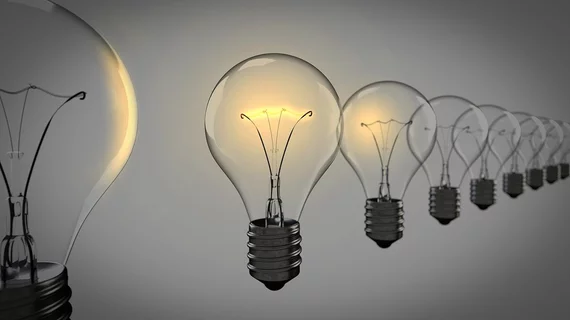Powering down interventional imaging systems after hours can save providers tens of thousands of dollars in electricity costs, according to new research published Wednesday.
Amid rising global temperatures, healthcare has sought to curb its energy consumption. Radiology is no exception, with its large carbon footprint and heavy reliance on technology.
Scientists with University Hospital Basel, Switzerland, sought to better understand this issue, analyzing the energy efficiency of their fleet of interventional imaging systems. Their data demonstrate clear financial benefit from modifying use patterns.
“Fluoroscopy-based interventional imaging systems are energy intensive in their operation, with high levels of nonproductive energy consumption,” lead author Jan Vosshenrich, MD, with the radiology department at University Hospital Basel, and colleagues wrote March 20 in the American Journal of Roentgenology. “Strategic operational adjustments (e.g., powering down idle-running systems when not in use) can substantially decrease carbon emissions and electricity costs, thereby improving environmental sustainability,” they added later.
For the study, Swiss scientists affixed their interventional radiology and neurointerventional suites, radiology fluoroscopy unit, two cardiology labs, and two more urology fluoroscopy units with power sensors. They extracted energy consumption logs for most systems during a four-week period in 2022 (and two-week span for the urology systems) and used this information to create full-year projections.
Across all seven systems, the average power draw was 0.3 to 1.1 kilowatts when turned off, 0.7 to 7.4 kilowatts when idle (with no patient in the room), 0.9 to 7.6 when active, and 1.9 to 12.5 kilowatts in a “net imaging state” (with active fluoroscopic image acquisition). Turning all systems off led to a relative decrease in power draw between 22% to 93%. Altogether, the IR systems had a combined projected annual energy consumption of nearly 116,000 kilowatt hours—comparable to 23 four-person households. Of that, about 93% of projected energy consumption occurred outside of the active, net-imaging state.
Making the hypothetical adjustment of switching all idle systems to off overnight and on weekends would reduce the Swiss hospital’s energy consumption by nearly 145,000 kilowatt hours while eliminating about $38,000 in electricity costs.
“Despite the resulting frequent system shutdowns and startups, the systems have not required any repairs since installation,” the authors advised. “If the system is needed on an emergent basis while it is powered down, then the on-call technologist powers up the system as soon as being notified by phone of the emergency. The times for system startup from the off mode and for subsequent system shutdown were approximately 2-5 minutes, providing opportunity during longer idle periods to safely switch off the systems.”
Read more about the study’s results, including potential limitations, in AJR at the link below.

